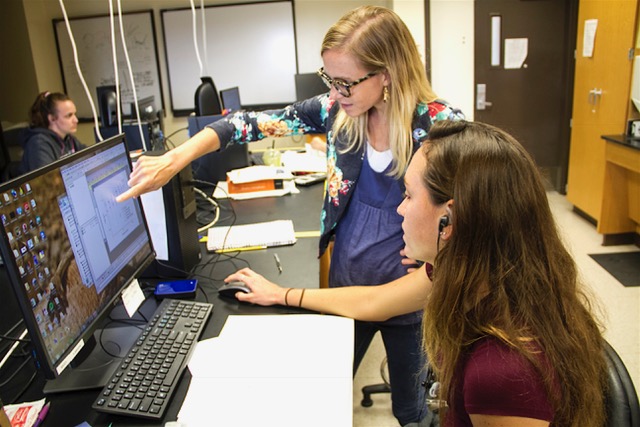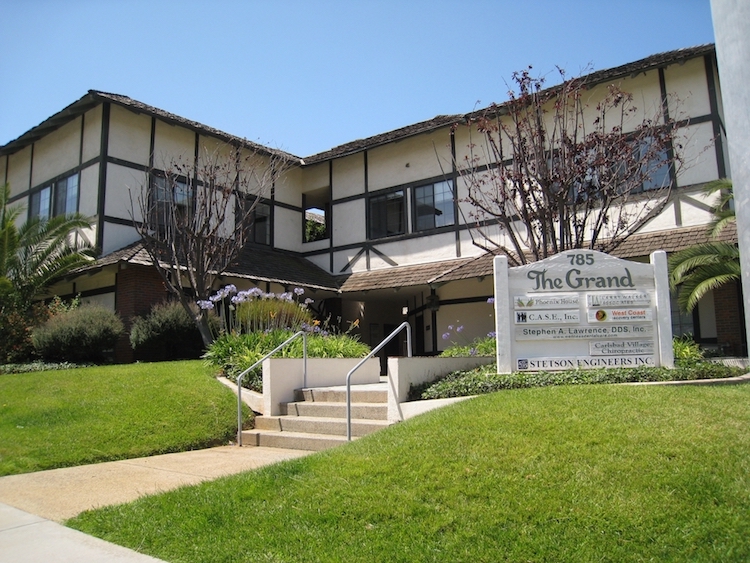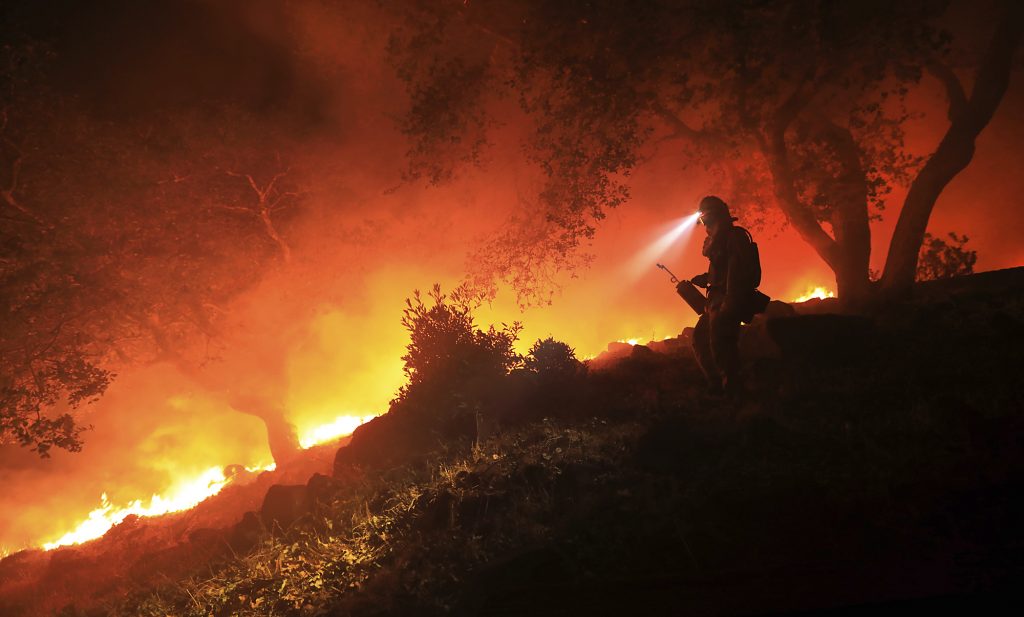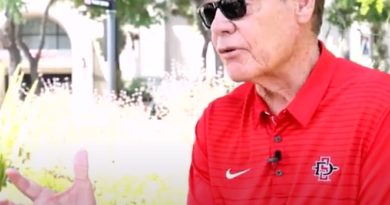Daily Business Report-July 18, 2018
Wildfires burned across Sonoma County, October 2017. (Photo by Kent Porter/The Press Democrat via AP)
Who will pay for wildfire damages?
Political firestorm is about to hit the Capitol
By Laurel Rosenhall | CALmatters
Asked this spring to identify the most important issue facing California lawmakers, the leader of the state Senate didn’t hesitate: wildfires.
Two months later—with fires blazing from the Oregon border to San Diego—legislators are poised to wade into a political firestorm sparked by last year’s historic fires and mudslides, which destroyed about 10,000 buildings and killed at least 66 people.
The biggest fight will be over liability—who pays for billions of dollars of damages from the loss of so many homes, businesses and lives? Expect another battle over how much utilities like Pacific Gas & Electric can pass liability costs onto their customers—and whether the state should step in to help. The backdrop for the drama: The scientific expectation that hotter, drier conditions brought on by climate change make it likely that California will suffer more large, intense fires.
All of this will play out in the Capitol in a special committee formed to create new laws aimed at preventing wildfires and improving the response to them. The committee has just a few weeks to figure it out because lawmakers are on summer recess for the rest of July and the legislative session ends on Aug. 31.
Interest groups with huge clout are gearing up. On one side are power companies that supply electricity to Californians and campaign cash to politicians. Their allies include an influential union representing electrical workers, and some environmentalists who see utilities as key players in California’s fight against climate change. On the other side stand different moneyed interests and political juice: insurance companies, plaintiffs’ lawyers and a coalition of fire victims that includes local governments and well-to-do homeowners.
“Even if it wasn’t contentious, it’s just complicated,” said Sen. Bill Dodd, a Napa Democrat who represents thousands of victims of last year’s Wine Country fires and is a co-chair of the new committee. “There are so many potential winners and losers depending on what decisions are made.”
Gov. Jerry Brown and legislative leaders have vowed they won’t retroactively change liability laws for the 2017 fires, which caused damages that will likely top $10 billion. But lawmakers will discuss changing liability laws to limit the financial burden on utilities in the future, when the next wildfires ignite.
The key issue is a legal doctrine called “inverse condemnation,” a fancy way of saying “with great power comes great responsibility.” Courts have ruled that the state Constitution gives utilities eminent domain rights—the power to take private land for public use. Subsequent rulings determined that utilities bear the associated responsibility in the form of strict liability. Under inverse condemnation, utilities are liable for any wildfire damage traced to their equipment—even if they were not negligent in maintaining it.
PG&E and other utilities are pushing to change inverse condemnation, arguing that it—combined with regulators’ decision barring San Diego Gas & Electric from passing liability costs on to customers following a 2007 wildfire—could cripple them.
“Without reform, the application of inverse condemnation directly threatens our shared energy future and the financial viability of California’s utilities that could unjustly face billions of dollars in liability without any ability to spread these costs across customers—irrespective of whether they are at fault for these wildfires,” said a statement from PG&E spokesman James Noonan.
Cal Fire investigations allege that PG&E’s equipment was involved in 16 of last year’s fires, and that in 11 of those the company violated state codes that require keeping trees and shrubs away from power lines. The company says it met the state’s standards. Investigators have not yet determined the cause of the Tubbs Fire, the deadliest of last year’s blazes.
The utilities argue that climate change contributes to wildfires, and that liability rules should reflect a “new normal” that involves greater risk.
“If we are operating the system and we’ve done everything we can and yet the environment around us causes a problem that leads to a large disastrous fire, the (legal) structure needs to be modernized to reflect today’s new challenges,” said Eugene Mitchell, vice president of San Diego Gas & Electric, which is widely praised for making its power system safer after the 2007 fire by replacing wood poles with steel and creating a high-tech weather center that tracks conditions before fires erupt.
Insurance companies and fire victims want to keep the inverse condemnation law—seeing the enormous liability it creates as an incentive for utilities to do everything possible to make the electrical system safe.
“You have to maintain some type of liability so that you continue to have responsible parties,” said Mark Sektnan, vice president of the Property Casualty Insurers Association of America.
Currently insurers pay their policy-holders after a disaster, then turn to utilities for reimbursement. Without that, insurers would likely charge homeowners more.
Other issues lawmakers will likely debate include how to strengthen the electrical system to prevent future fires and how much utilities can spread liability costs onto customers. A new bill proposed by Democratic Assemblyman Bill Quirk of Hayward would allow PG&E to access state-authorized bonds to pay off damages from last year’s fires. PG&E customers would pay off the debt, though at a lower rate than if PG&E had to borrow from another source, the bill says.
“One way or another, ratepayers are going to be part of the solution and it’s just a matter of what’s the venue: bankruptcy court or the state Legislature?” said Scott Wetch, a lobbyist for the electrical workers union.
Though raising rates for customers is politically unpopular, Wetch says it’s no different than how other businesses handle disaster—whether it’s an unexpected freeze that causes vegetable prices to rise, or an explosion at an oil refinery that triggers a jump in prices at the pump.
Doubts about whether California will change the liability law caused Standard & Poors to downgrade its rating outlook for two of the state’s utilities: “Time is of the essence because the 2018 legislative session ends in just under eight weeks and wildfires continue to rapidly and actively spread throughout California,” said the July 9 report by S&P Global Ratings.
Lower credit ratings make it more expensive for utilities to borrow money that allows them to build clean-energy projects such as charging stations for electric cars and battery storage for solar power—items lawmakers and Brown have prioritized in California’s fight against global warming.
“The utilities have financed a big part of the climate change agenda we’ve accomplished,” said environmental lobbyist V. John White. “We can’t have paralysis on building the infrastructure we need to meet our greenhouse gas reduction targets.”
It adds up to a monumental heap of fallout from recent wildfires. And it explains why Senate leader Toni Atkins, a San Diego Democrat, was so quick to say in May that the mop-up is the biggest issue facing the Legislature:
“This new coined phrase, ‘new normal,’ is really something we’re going to have to grapple with in terms of climate change and what it means for us, and the cost to California.”
CALmatters.orgis a nonprofit, nonpartisan media venture explaining California’s policies and politics.
___________________

USD receives $1 million grant
to create futuristic materials
Imagine a bridge that could sense a crack forming and heal itself before disaster ensues. A material that can move and respond to external cues to perform dangerous search and rescue operations or explore the far reaches of space. A $1 million grant from the Los Angeles-based W.M. Keck Foundation to the University of San Diego will fund research toward creating a revolutionary class of autonomous “intelligent” materials that can perform work, change shape, and move by harnessing biologically-derived molecular components.
“We are very excited to receive this grant,” said Rae M. Robertson-Anderson, chair of the Physics and Biophysics Department and the principal investigator for the grant. “I have goosebumps just thinking about the fact that we could turn this vision into a reality.”
Specifically, Robertson-Anderson and her team will “fuse the skeletal proteins from cells with circadian clock proteins to engineer a suite of tunable materials that can autonomously stiffen and soften,” she said. “This revolutionary approach to materials engineering has the potential to create an entirely new class of ‘living’ materials that can not only intelligently respond to external signals but also anticipate future demands.”
___________________
Cal State San Marcos to co-host
California Teachers Summit
North County teachers will gather at California State University San Marcos on Friday, July 27, for the fourth annual Better Together: California Teachers Summit, a free statewide day of learning and networking for all California PreK-12 teachers, teacher candidates, school administrators and other educators.
This year’s keynote speaker is Sir Ken Robinson, an internationally acclaimed expert on creativity and innovation and author of “Finding Your Element,” “The Element: How Finding Your Passion Changes Everything” and “Out of Our Minds.” Robinson will be livestreamed to all participants from his appearance at Cal State Fullerton.
The summit will also feature two local teachers presenting TED-style EdTalks around this year’s theme, “It’s Personal: Meeting the Needs of Every Student.” Jaime Yumiko Brown, an International Baccalaureate English teacher and a 2018 California Teacher of the Year, will speak to helping children find their voice in the classroom. Scott Bedley, also a former teacher of the year, author and trainer, will speak about his global school play day in his talk titled, “When the World Stops to Play.”
More information: CATeachersSummit.com
___________________
Personnel Announcements
Brian Frederick named associate landscape
architect at McCullough Landscape Architecture

Brian Frederick has earned the title of associate landscape architect as well as business development manager at McCullough Landscape Architecture. Additionally, Frederick recently passed his California licensure exam and is officially a landscape architect (now calling themselves Professional Landscape Architects, PLAs).
Prior to joining McCullough, Frederick spent some time designing an industry-standard software called Land F/X, as well as working
independently as a consultant to teach and help other landscape architecture design firms standardize their documentation practices.
Frederick received his Bachelor of Landscape Architecture from Texas A&M University in 2012 and has been involved with the professional practice of landscape architecture ever since. His experience spans projects in both the private and public realm, being responsible for the design, documentation, and management of many public parks, institutional campus upgrades, and corporate campus retrofit projects across the nation.
At McCullough, Frederick also assists with design development, quality control, client relations, document development and staff software support.
___________________
Classes scheduled for newly
licensed real estate agents
The North San Diego County Association of Realtors (NSDCAR), a 7,000-member real estate trade group, will present a series of nine classes in July and August as part of its 2018 New Agent Series, a program for newly licensed real estate agents. Dates for the classes are July 24, 30 and Aug. 6, 13. Classes will be held at NSDCAR’s Vista Service Center, 906 Sycamore Ave., Vista.
Topics will include an overview of the transaction process, contracts and industry fundamentals. Enrollment cost for members and nonmembers varies from class to class, from $10 to $45 for members and from $15 to $67 for nonmembers, although a bundle rate for all nine classes is priced at $95 for members and $145 for nonmembers. For more information and to RSVP, call (760) 734-3971 or visit www.NSDCAR.com/education.
___________________
Sikorsky delivers first Black Hawk
helicopter to San Diego Rescue Department
Sikorsky, a Lockheed Martin company, has delivered an S-70 Black Hawk helicopter to the city of San Diego Fire-Rescue Department. When modified by a third party as a FIREHAWK helicopter with a 1,000-gallon belly tank, retractable snorkel, extended landing gear and rescue hoist, the city will have a multirole platform with the speed to more quickly find and extinguish wildfires, perform rescue missions, and deliver initial medical care across the city and neighboring counties.
Ahead of its modifications into the FIREHAWK configuration in 2019, San Diego Fire-Rescue will press the new helicopter into aerial firefighting service later this year using an 850-gallon internal tank. The S-70 Black Hawk helicopter has the engine power to carry over four tons of water, and will operate with safe power margins in hot temperatures at high altitudes. The aircraft’s high strength and corrosion resistant airframe significantly reduces maintenance costs.
___________________

Carlsbad office building sells for $6.54 million
The Grand, a 19,363-square-foot office building at 785 Grand Ave. in Carlsbad, has sold for $6.54 million to Keith Harrison of Encinitas. The seller was Carlsbad Grand LLC of South Pines, N.C.
Lee & Associates represented the seller. Cushman & Wakefield represented the buyer.
___________________

Community College:
part of Jerry Brown’s past and future
By Dan Morain | Lucas Public Affairs
Gov. Jerry Brown Monday enthusiastically promoted the new online community college he created in this year’s budget, saying it’s part of the “powerful new reality” that “learning is at our fingertips.”
Some context: Brown got his start in politics by winning a community college seat in Los Angeles almost 50 years ago. Now, as his term winds down, Brown went to the California Community College Board of Trustees to underscore his support for the new undertaking. “This is big. It’s important. … It is obvious. It is inevitable. It is a juggernaut. It cannot be stopped.”
Brown included $120 million in his final budget for the new online community college, which is scheduled to start in the fall of 2019 after he has left office. Like the other 114 other community college districts, the online college will have its own board and president.
Students who cannot take time from jobs and family to attend regular classes will enroll in courses that will help them advance in their jobs, no matter their age. CALmatters’ Felicia Mello described the concept in this piece.
Teachers and others were skeptical at the start, viewing it as a threat to a more traditional college education. Many have become supportive, if not fully enthusiastic.
Tom Epstein, the board’s vice-president: “The governor gave the rationale for why it is important to the state. That will help constituencies who have to implement it be more supportive.”
___________________

CV Sciences opens office in Sorrento Valley
CV Sciences Inc., manufacturers of PlusCBD Oil, has moved its San Diego office into a new 24,721-square-foot space in Sorrento Valley. The company’s headquarters remains in Las Vegas, with their operations occurring primarily in San Diego. The new office space was acquired to give the company a substantially greater amount of space to support rapid growth.
A state-of-the-art laboratory and production facility are featured in the new space. The complex also includes a distribution center that supports the PlusCBD Oil retail partners and a separate distribution center nearby that supports all eCommerce sales.
The office design features a retro Vegas inspiration along with a modern, open layout. Themed conference rooms are decorated with rare memorabilia, with one room, called the Sinatra Room, featuring a signed guitar that Sinatra used on a Vegas show set. There are also rooms dedicated to San Diego’s baseball hero, Tony Gwynn, and Elvis Presley.
___________________
Humanities students get boost from
UC San Diego-college district collaboration
Twenty-six transfer students from San Diego City, Mesa, and Miramar colleges are spending five weeks at UC San Diego this summer as part of a joint UC San Diego-San Diego Community College District initiative aimed at expanding pathways to the humanities.
The PATH Summer Academy — Preparing Accomplished Transfers to the Humanities — is among the programs funded through a $2.59 million grant from the Andrew W. Mellon Foundation. The program is part of a larger effort to reverse a recent trend in which fewer and fewer students are graduating with bachelor’s degrees in the humanities.
PATH Summer Academy courses generally cover culture in the United States. Students this summer will be enrolled in classes such as Jazz and the Music of the African Diaspora and The History of Race in the United States. Summer Academy attendees will participate in workshops at the iconic UC San Diego Library and campus Career Center. They will also meet directly with faculty from the Division of Arts and Humanities, home to the departments of History, Literature, Music, Philosophy, Theatre and Dance, and Visual Arts, as well as the Institute of Arts and Humanities and Analytical Writing Program.
This year’s academy began with an orientation July 1; classes continue through Aug. 3.



